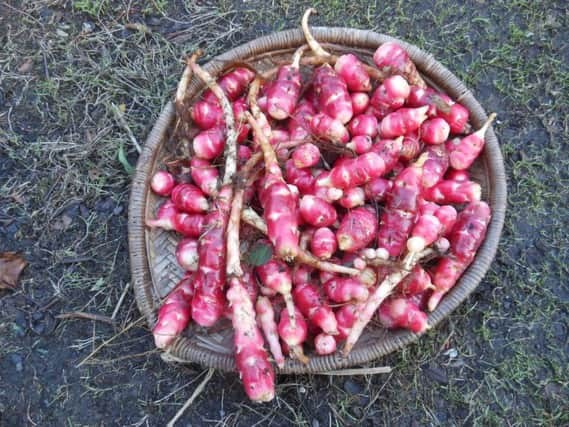Jenny Mollison: Heritage varieties connect us to the past


But I realised how hazy my knowledge was when my friend Louise asked if I knew when Jerusalem artichokes were first grown here. Louise is the head gardener at the National Trust for Scotland’s Culross Palace in Fife. Her challenge is to cultivate edible plants which might have grown there when the palace was built. Turning to my facsimile copy of John Reid’s The Scots Gard’ner (pub.1683), I find that they were cultivated in the 17th century here. They are also mentioned as having been cultivated in England at the end of the 16th century in Gerard’s Herball.
There’s a fair chance that something which has flourished in Scotland for several centuries will continue to thrive. Jerusalem artichokes are no exception. The foliage makes a great windbreak and their yellow flowers are quite decorative. They can become rather a nuisance if odd tubers are left in the ground to multiply unchecked. I grow a few at the back of my plot.
Advertisement
Hide AdAdvertisement
Hide AdMore useful information about when plants were originally recorded in this country is contained in a lovely catalogue from Chiltern Seeds (www.chilternseeds.co.uk). Their Veg Book 2016 makes a good read even if I could resist the temptation to place an order. I thought I’d ordered all the seeds I was going to need for 2016, but was swayed by Chiltern’s persuasive suggestion to “grow something new from seed”. Runner beans are great favourites in our family and grow well on my plot. So I have ordered a packet of an heirloom variety called “Black Coat” which apparently has ornamental scarlet-orange flowers and was first recorded in 1654.
The impetus to experiment comes from different sources and is not restricted to heritage vegetables. Last year I was given some oca tubers, sometimes called New Zealand yams. They are a variety of oxalis with pretty leaves and little yellow flowers. I planted them like potatoes and was told to leave them in the ground until the first frost when the foliage collapses. I gathered a good crop and the bright pink tubers are very decorative although some of the colour fades when they are roasted. They have been a resounding success in our kitchen, and not only because they are so easy to prepare, needing just a quick rinse before cooking. I’ll be growing these again this year.